Top 9 Rarest Types of Diamonds in the World: Diamonds are among the most valuable and sought-after gemstones in the world because of their exceptional rarity and desirability.
In general, diamonds are not very common. On the other hand, diamonds of poorer quality are considerably more widespread and may be purchased by virtually anyone.
On the opposite end of the scale are the exceptional diamonds, which are extremely rare and can sell at auction for tens of millions of dollars or more.
These extremely costly diamonds are invariably any or all of the uncommon varieties of diamonds that are included on this list.
Diamonds may be considered rare due to the color of the stone or the kind of diamond, which is determined by the amount and kind of chemical impurities that are present in the stone.
Overall, naturally colored diamonds are extremely uncommon, and they only make up 0.01% of the total diamonds mined around the world (this percentage includes diamonds of all colors).
Top 9 Rarest Types of Diamonds in the World
1. Type IIa Diamonds
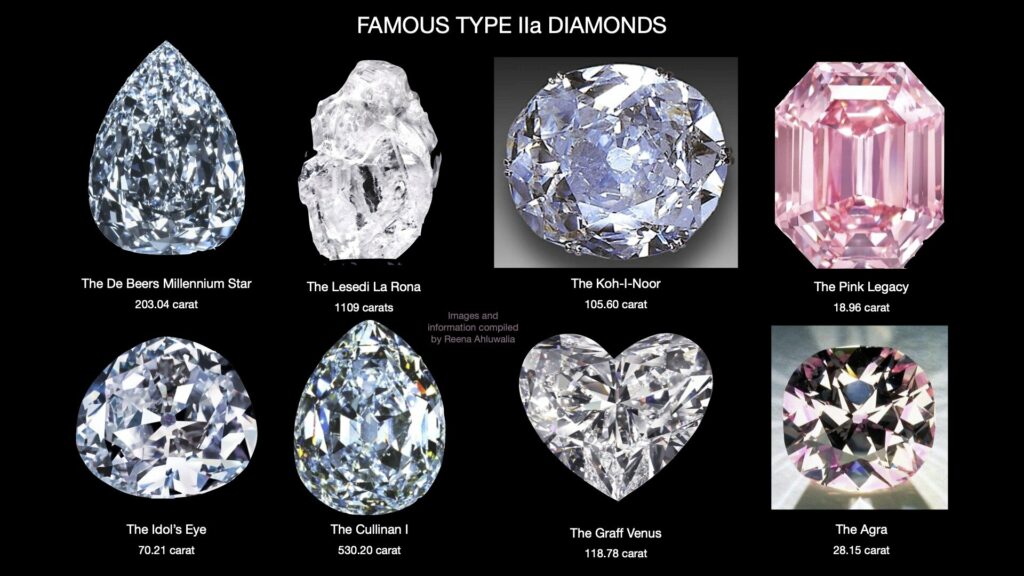
- Percentage of Total Diamonds Mined: 1 to 2%
- Current Value: Varies widely depending on cut, clarity, color, and carat weight; high-quality examples are worth tens of millions of dollars
- Notable Examples: Elizabeth Taylor Diamond (sold for $8.8 million); Koh-i-Noor and Cullinan Diamond (both British Crown Jewels); Daria-i-Noor (Iranian Crown Jewel); The Lesotho Legend (sold for $40 million); The Pink Legacy (sold for $50.4 million)
- Largest Producer(s): Western Australia, India, Russia, Brazil, Siberia, South Africa, Tanzania, and Canada
Type IIa diamonds are the most costly of the rare diamond varieties despite being the least rare of the rare diamond types.
Type IIa diamonds are believed to be the “purest” diamonds on the market due to the extremely high purity of the carbon that they contain.
Diamonds that fall into the Type IIa category often have very few, if any, imperfections and might have a colorless, yellow, pink, purple, or brown appearance.
It takes longer for type IIa diamonds to develop, which is one factor that contributes to their superior quality. In general, diamonds of the Type IIa kind are extremely costly.
Some of the most famous examples are estimated to be worth tens of millions of dollars, while others are regarded as being of incalculable value.
Did It Cross Your Mind?
The Koh-i-Noor and the Cullinan Diamond, both of which are part of the British Crown Jewels, as well as the Daria-i-Noor, which is part of the Iranian Crown Jewel, are both instances of magnificent Type IIa diamonds that are part of the crown jewel collections of their respective countries.
2. Type IIb Diamonds
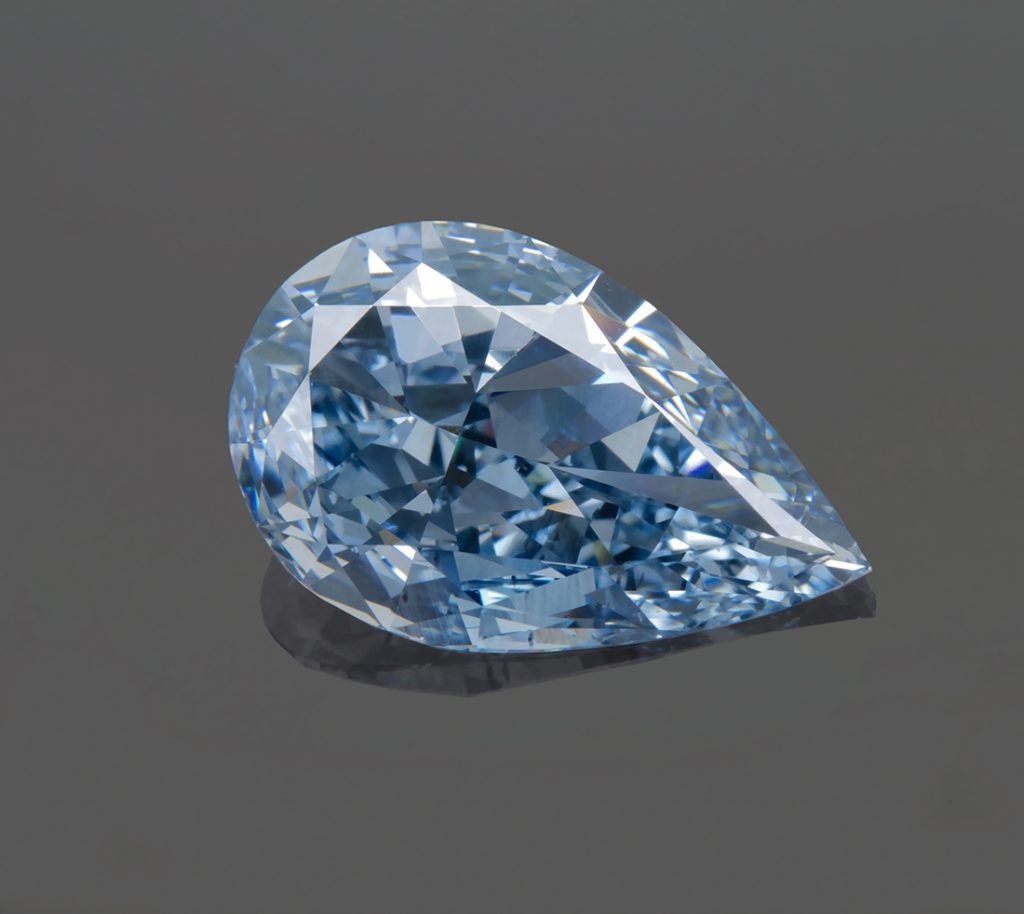
- Percentage of Total Diamonds Mined: about 0.1%
- Current Value: Varies widely depending on cut, clarity, color, and carat weight; high-quality examples are worth millions of dollars
- Notable Examples: The Cullinan Dream (sold for $25.4 million); The Okavango Blue; Blue Moon of Josephine ($48.4 million)
- Largest Producer(s): India, Australia, South Africa, and Botswana
The Type IIb diamonds are the second-rarest type among the four basic types of diamonds, following closely behind the Type Ib diamonds.
Boron is present in relatively high concentrations in type IIb diamonds, in contrast to the absence of nitrogen found in the other three types of diamonds. As a result of this, every blue and grey diamond is considered to be of the Type IIb variety.
The exceptional value of Type IIb diamonds can be attributed to the fact that their coloration is often either blue or grey or a combination of the two.
Lesser instances of Type IIb diamonds can be purchased for a few thousand dollars, although more well-known gems can sell for tens of millions of dollars.
Did It Cross Your Mind?
Electrical conduction is possible in Type IIb diamonds because boron is present in these diamonds.
3. Type Ib Diamonds
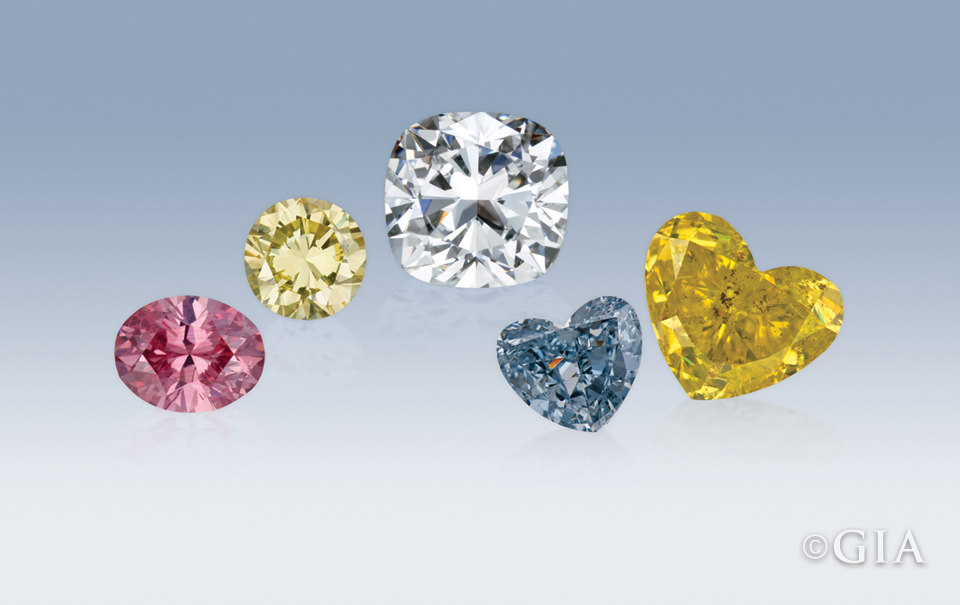
- Percentage of Total Diamonds Mined: less than 0.1%
- Current Value: Varies widely depending on the cut, clarity, color, and carat weight; high-quality examples are worth millions of dollars
- Notable Examples: Allnat Diamond (Est. value: at least $3 million); L’Incomparable (Est. value: $55 million); Sun of Africa Yellow Diamond (sold for $10.9 million); The Kahn Canary; Tiffany Yellow Diamond
- Largest Producer(s): Western Australia, South Africa, India, Russia, Brazil, Sierra Leone, The Congo, and Canada
In a general sense, diamonds are categorized according to the amount and kind of chemical impurities that they contain. The system can be broken down into four primary classifications: Type Ia, Type Ib, Type IIa, and Type IIb.
The most common type of diamond is known as Type Ia, which accounts for around 98% of all diamonds mined. The other three types make up the remaining 2%, making them substantially rarer than Type Ia diamonds.
Type Ib diamonds make up less than 0.1% of all diamonds, making them the rarest of the four varieties. Type Ia diamonds are the most common.
Diamonds of type Ib have atoms of nitrogen dispersed throughout their structure, which causes them to have a color that is often yellow, brown, or orange.
Did It Cross Your Mind?
Canary diamonds, which are known for their vibrant and intense yellow color and are valued at millions of dollars, are the best example of diamonds that belong to the Type Ib category.
4. Green Diamonds
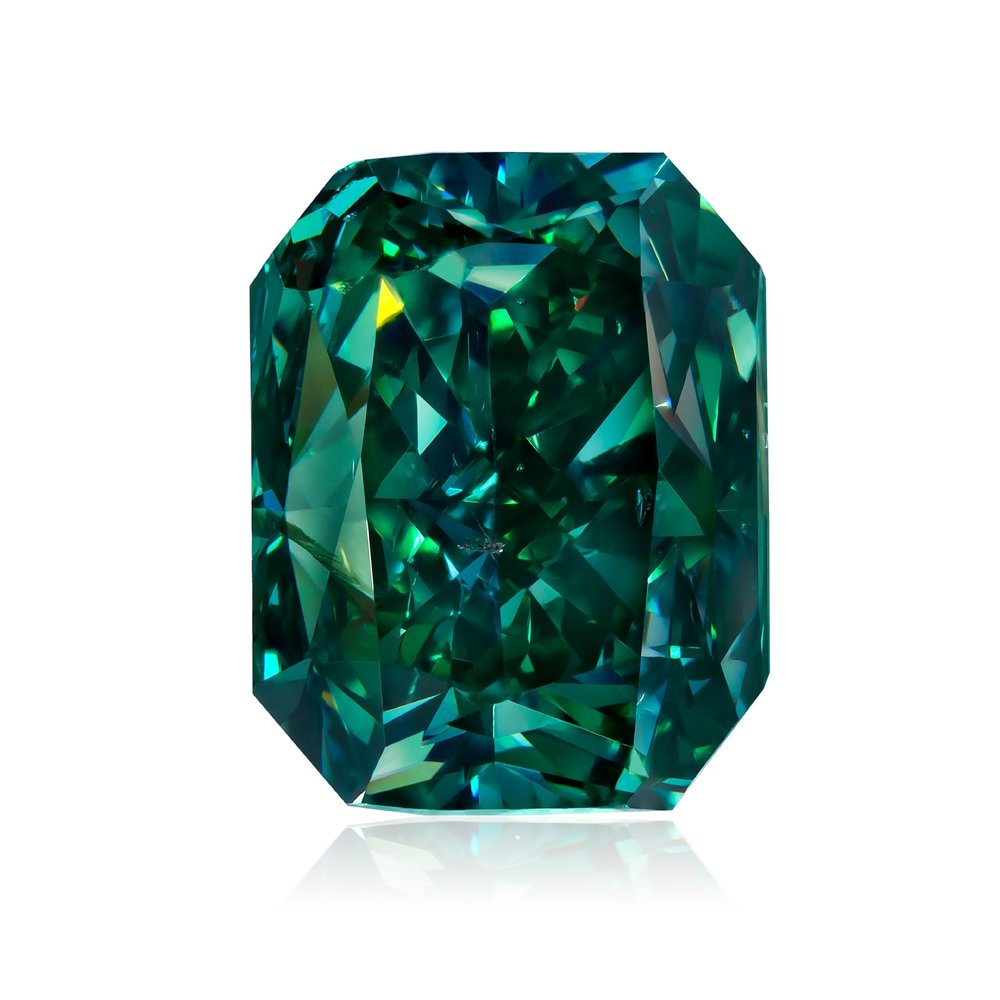
- Percentage of Total Diamonds Mined: Unspecified – less than 0.001%
- Current Value: Varies depending on secondary hue, cut, clarity, and other factors – ranges between a few thousand to about $1 million per carat
- Notable Examples: Dresden Green; Aurora Green (sold for $16.2 million)
- Largest Producer(s): Borneo, Brazil, Guyana, Venezuela, Zimbabwe, the Central African Republic, and India
Even though green diamonds are the least rare of all the unusual naturally colored diamonds, pure green diamonds are extremely uncommon and are almost never put up for sale.
In point of fact, there are just two well-known examples of naturally occurring diamonds with a pure green color: the well-known Dresden Green and the more contemporary Aurora Green.
The Dresden Green is irreplaceable, whereas the Aurora Green was mounted in a ring that brought $16.2 million in 2016 when it was put up for sale.
The majority of naturally occurring green diamonds have a color that is confined solely to the surface of the stone, as opposed to having the color equally spread throughout the stone.
Because of this, cutting green diamonds is a particularly challenging process due to the necessity to retain the diamond’s delicate coloring.
Did It Cross Your Mind?
Irradiation from the earth’s atmosphere is responsible for giving natural green diamonds their distinctive hue.
Because gemologists are aware that irradiation can make a diamond appear green, the majority of green diamonds currently available on the market have been irradiated artificially in a laboratory.
5. Orange Diamonds
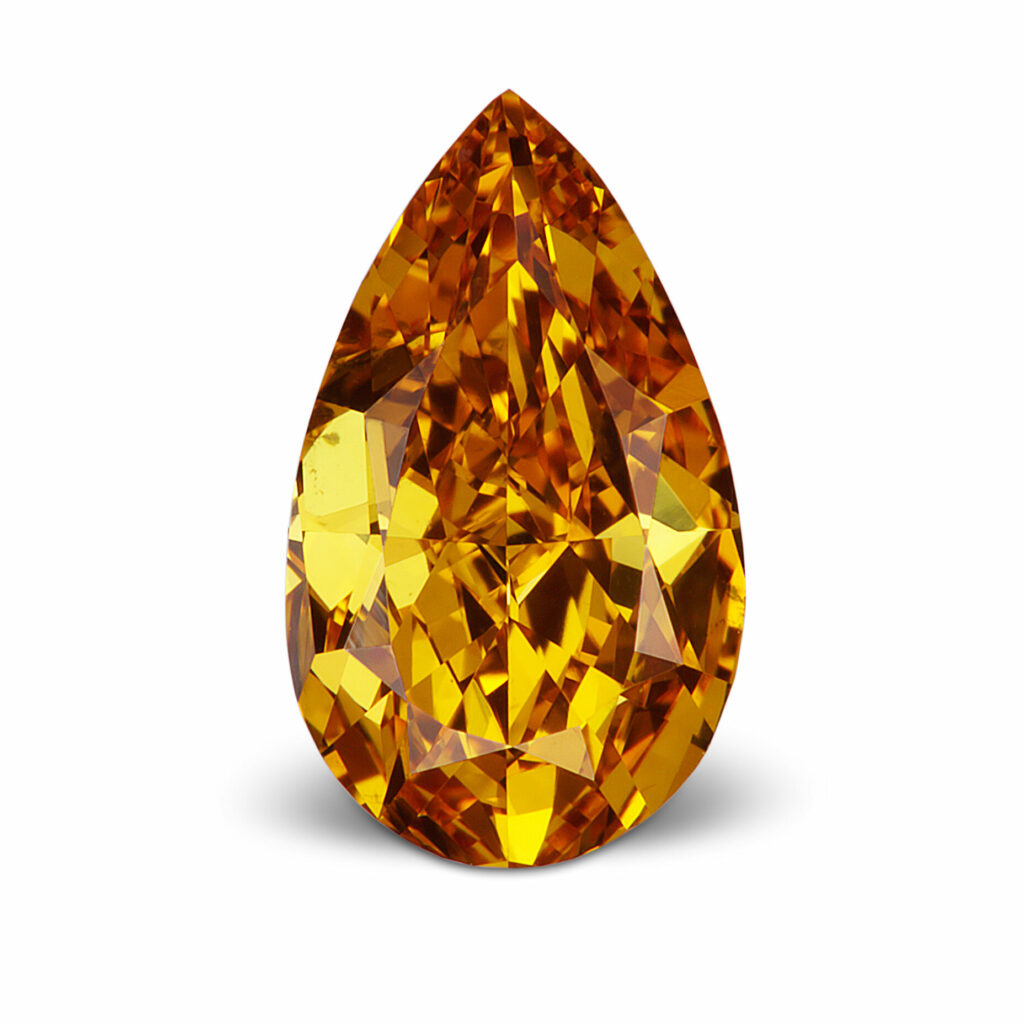
- Percentage of Total Diamonds Mined: Unspecified – less than 0.001%
- Current Value: Varies depending on secondary hue, cut, clarity, and other factors – ranges between a few thousand to about $1 million per carat
- Notable Examples: The Orange (sold for $35.5 million); The Pumpkin Diamond (Est. value: at least $3 million)
- Largest Producer(s): Western Australia and South Africa
Pure orange diamonds, which would have just the proper quantities of yellow, red, and other secondary tones, are particularly rare to obtain since the color orange is created by combining yellow and red.
However, when compared to red, blue, pink, and purple diamonds, orange diamonds do not have the same level of rarity.
There are a fair amount of instances in which diamonds have orange overtones, however, the Gemological Institute of America hardly ever assigns a grade of “pure orange” to a stone.
The inclusion of nitrogen, which is also responsible for the golden colour of yellow diamonds, is what gives orange diamonds their distinctive hue.
Orange diamonds almost always have either a brown, yellow, or pink overtone; the orange hue is the secondary color of the stone.
The term “orangey” refers to any diamond that has orange tones that make up less than 25 percent of the stone.
Did It Cross Your Mind?
Orange diamonds are frequently referred to as pumpkin diamonds for reasons that should be obvious, and one prominent orange diamond was formerly known as The Pumpkin.
6. Purple Diamonds

- Percentage of Total Diamonds Mined: Unspecified – less than 0.01%
- Current Value: Varies depending on secondary hue, cut, clarity, and other factors – ranges between a few ten thousand to a couple of million dollars
- Notable Examples: The Royal Purple Heart; The Supreme Purple Diamond Heart (Est. value: $4 million per carat); The Purple Orchid (sold for $4 million); The Argyle Violet (Est. value: $4 to $5 million)
- Largest Producer(s): Western Australia, Siberia, Russia, Brazil, and Canada
Purple diamonds in general tend to have secondary hues and overtone colors, which is one reason why they are not thought to be quite as rare as pink, blue, or red diamonds. Pure purple diamonds, on the other hand, are extremely uncommon.
In point of fact, a considerable number of purple diamonds have a tone that is either pinkish, blueish, greyish, or even red.
Purple diamonds are highly expensive and generally sell for anywhere between a tens of thousands of dollars and upwards of a few million dollars.
This is despite the fact that secondary colors typically cause a diamond’s value to decrease. The Argyle Mine in Australia, Siberia, Russia, Brazil, and occasionally Canada are the primary origins of purple diamonds.
Did It Cross Your Mind?
Because of the high concentrations of hydrogen and boron that are found in purple diamonds, it is assumed that the presence of these two elements is responsible for the purple color of purple diamonds. However, the origins of the color of the purple diamond are not known for certain.
7. Pink Diamonds
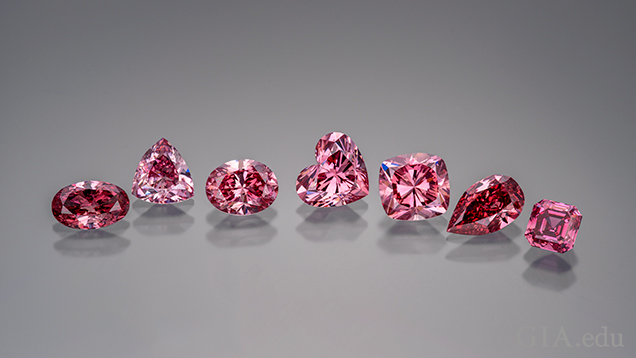
- Percentage of Total Diamonds Mined: Unspecified – less than 0.01%
- Current Value: Between $100,000 per carat to $1 million per carat depending on color intensity, cut, clarity, and other factors
- Notable Examples: Daria-i-Noor and Noor-ul-Ain (both Iranian crown jewels); The Pink Star (sold for $71.2 million); Graff Pink Diamond (sold for $46 million); Martian Pink (sold for $17.4 million); and Princie Diamond (sold for $39.3 million)
- Largest Producer(s): Western Australia, Brazil, Russia, Siberia, South Africa, Tanzania, and Canada
Pink diamonds are the most coveted of all the naturally colored diamonds due to their color, which is described as having a “beautiful rosy hue,” and its reputation for being worn by famous women and members of royal families.
Pink diamonds are in extremely high demand, which means that good-quality samples and greater carat weights can command exceptionally high prices.
Some pink diamonds have been sold for tens of millions of dollars, while others, such as the Daria-i-Noor and Noor-ul-Ain, both of which are part of the Iranian crown jewel collection, are virtually irreplaceable.
The Argyle Mine in Western Australia is the source of the majority of pink diamonds, just as it is the source of the majority of the world’s naturally colored diamonds.
In addition to South Africa, Brazil, Russia, and Siberia, pink diamonds can be found in Africa, Tanzania, and possibly Canada.
Did It Cross Your Mind?
As is the case with red diamonds, no one is entirely certain how pink diamonds obtain their color. It is thought that pink diamonds were once colorless diamonds that had their structures twisted and changed when they were making their way up to the surface of the Earth.
8. Blue Diamonds
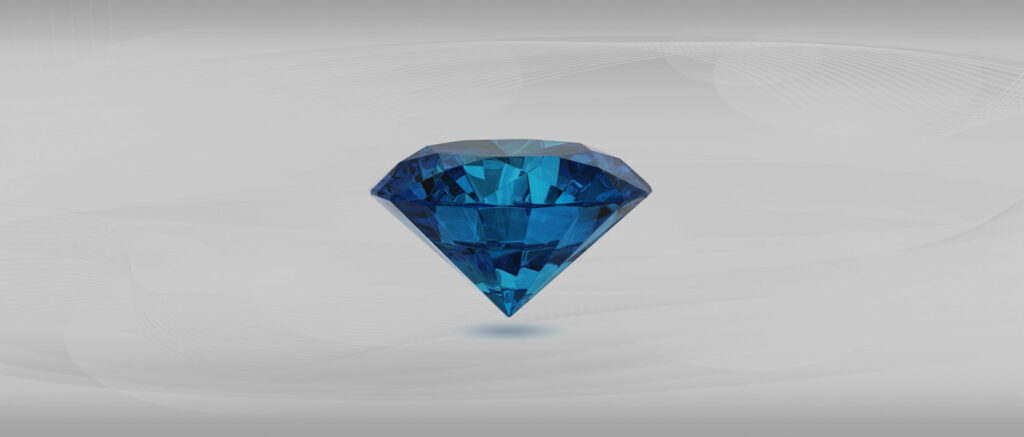
- Percentage of Total Diamonds Mined: Unspecified – less than 0.01%
- Current Value: Depends on color intensity; can range from high thousands to at least a $1 million per carat
- Notable Examples: The Hope Diamond (Est. value: $200 to $350 million); The Cullinan Dream (sold for $25.4 million); The Okavango Blue; Blue Moon of Josephine ($48.4 million)
- Largest Producer(s): India, Australia, South Africa, and Botswana
Blue diamonds are second only to red diamonds in terms of their rarity, but due to increased demand, they fetch higher prices than red diamonds do.
Despite the fact that blue diamonds are the second rarest variety of diamonds, there have been many significant examples of them. One of these is the famous Hope Diamond, which is said to be cursed due to the high number of fatalities that have been related to it.
Boron is present in very small quantities in the crystal lattice structure of blue diamonds, which is how they get their distinctive color.
The second-largest producer of blue diamonds in the world is South Africa, followed by Western Australia and Botswana, which only started producing them recently.
Did It Cross Your Mind?
According to more recent studies, blue diamonds are the deepest diamonds in the world since they developed approximately 250 to 410 miles (410 to 660 km) below the surface of the Earth.
9. Red Diamonds
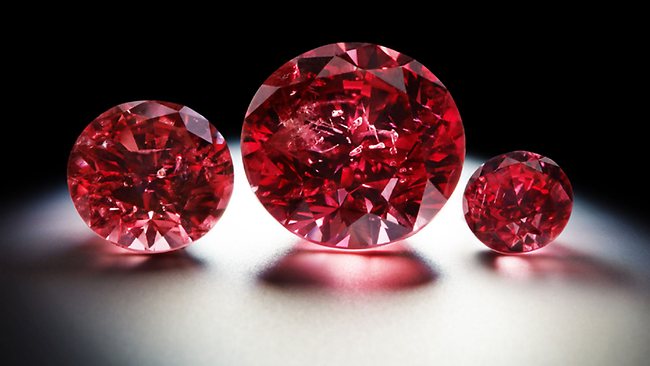
- Percentage of Total Diamonds Mined: Less than 30 known examples of pure red diamonds ever found
- Current Value: Hundreds of thousands of dollars per carat
- Notable Examples: Moussaieff Red Diamond (Est. value: $20 million); Hancock Red (sold for $880,000); Kazajian Red Diamond; DeYoung Red Diamond (Est. value: about $5 million)
- Largest Producer(s): Australia, Africa, and Brazil
Red diamonds are the rarest of all the numerous kinds of diamonds that can be found, making them the rarest diamonds in the world.
Natural diamonds with a pure red coloration are extremely uncommon; less than thirty samples have ever been found.
Because red diamonds are so uncommon, the price per carat of one of these stones often ranges from tens of thousands to well over a hundred thousand dollars.
For instance, in 1987, the renowned Hancock Red, which is considered to be the first-ever instance of a red diamond, was sold for $880,000, which works out to around $926,000 per carat!
In addition to their extreme scarcity, red diamonds have a certain air of intrigue about them. Even after decades of investigation, no one is really certain how red diamonds got their color in the first place.
The most widely accepted explanation for red diamonds is that they are really dark pink diamonds that have undergone a plastic deformation in their crystal lattice structure. This alteration causes red to be seen instead of pink to the human eye.
Did It Cross Your Mind?
Red diamonds have been discovered in the same locations as pink diamonds, and there has never been a discovery of a red diamond that did not also involve the discovery of a nearby pink diamond.
Top 9 Rarest Types of Diamonds in the World 2024 – Newshub360.net
Related Post
Credit: www.Newshub360.net
